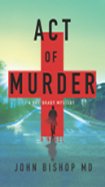Spencer Quinn. The Sound and the Furry. Atria, 2013.
———. Paw and Order. Atria, 2014.
The Sound and the Furry is another enjoyable Chet and Bernie mystery. A big part of the enjoyment comes from the stories being told from the dog’s point of view: Many sounds, many smells, always distracted by food, and confusion over human conversation.
This time private investigator Bernie Little meets a “perp” he knows as he watches a prison highway crew at work. Frenchie Boutette hires Bernie to locate his missing brother Ralph—the only law-abiding one in the family, and that includes his mother. Ralph is an inventor with nearly thirty patents to his credit, and he has suddenly disappeared.
The search takes Bernie to the Bayou country of Louisiana. Ralph has been living on a houseboat. Frenchie’s wife Vannah actually paid Bernie for the assistance with money that smelled of shrimp.
When Bernie arrives in St. Roch, Louisiana, he learns that one of Ralph and Frenchie’s other two brothers has been arrested for stealing a truckload of shrimp. No one knows what happened to the cargo although a local restaurant is offering an all you can eat shrimp fry. Duke Boutette was the last person seen near the shrimp, and he was too drunk or stoned to remember anything.
Even before Bernie leaves his home in Arizona, he was offered fifty thousand dollars to work for an unethical security firm and threatened by a stocky Quiero, a member of Central American drug gang. Everyone describes Ralph the same way—a loner, a brain, wouldn’t hurt a fly, a math genius. What is going on anyway?
There is quite a lot. Bernie stays faithful to his girlfriend Suzie in spite of Vannah’s attempts to seduce him. He find’s Ralph’s glasses on a bayou islet. He learns that Ralph’s dog Napoleon is missing, too. When he visits a local veterinarian to ask about Napoleon, she is busy cleaning a few oil-soaked seabirds.
Chet not only tells us the story in is delightful way—never, he tells us try to chew steel wool—he also makes a few discoveries himself. Unfortunately, he is not always able to communicate what he has discovered. Twice in Louisiana he recognizes the scent of the man from the California security firm, but Bernie cannot smell him or recognize him.
Oh, yeah, the Boutettes having been feuding with the Robideaux family since the Civil War. And, as the title suggests the line from Macbeth, “…it is a tale/Told by an idiot, full of sound and fury” and the Southern Gothic novel The Sound and the Fury, which is a tale told in part by a mentally challenged boy. In Faulkner’s day, they called them idiots.
There is a running gag in The Sound and the Furry about how stupid the three Boutette brothers excluding Ralph are: “What’s dumber than a moron?” No, Chet our narrator is no idiot, but some of the characters in this story are.
Paw and Order directly follows on the tail of The Sound and the Furry. Instead of returning home to Arizona, Bernie decides to go to Washington, D.C., to surprise his girlfriend Suzie, a journalist there.
Suzie has gotten involved in an investigation that may concern some foreign powers meddling in an American presidential campaign. Now, this book came out in 2014. I cannot help thinking that Christopher Steele or someone from the Clinton campaign read this book and said, “What a great idea!”
Bernie gets suspicious that things are not quite right when Suzie’s landlady, a woman named Lizette Charbonneau from Montreal, tells him the best place to stay in the city is the Chateau Frontenac. The Frontenac is a lovely place, but it is in Quebec City, not Montreal.
Though Bernie has an interesting scuffle with some bikers in the first chapter, the adventure really begins when Suzie’s main source of information is murdered. Bernie gets involved right away because he is arrested for the murder. Now, Bernie has been arrested before by crooked officials, but this time there is enough evidence to cause his arrest.
After Bernie is released, the British father of the murdered man hires Bernie to find out what he can. Neither we nor Bernie learn why he is suddenly released and even given a p. i. license for the District of Columbia until the very end. There are a lot of secrets in the nation’s capital.
Chet the dog narrates this story, too. Again, Chet notices things the humans don’t. There is a man who frequently shows up for no apparent reason, but Chet seems to be the only one who notices him. He also sees a strange bird flying around Suzie’s house. He tries to let the humans know about it, but it always flies away before they see what he is barking at.
As ever, Chet entertains the reader with his canine perspective, and it seems almost everyone is either lying or covering something up. Does truth even exist in D.C.?
